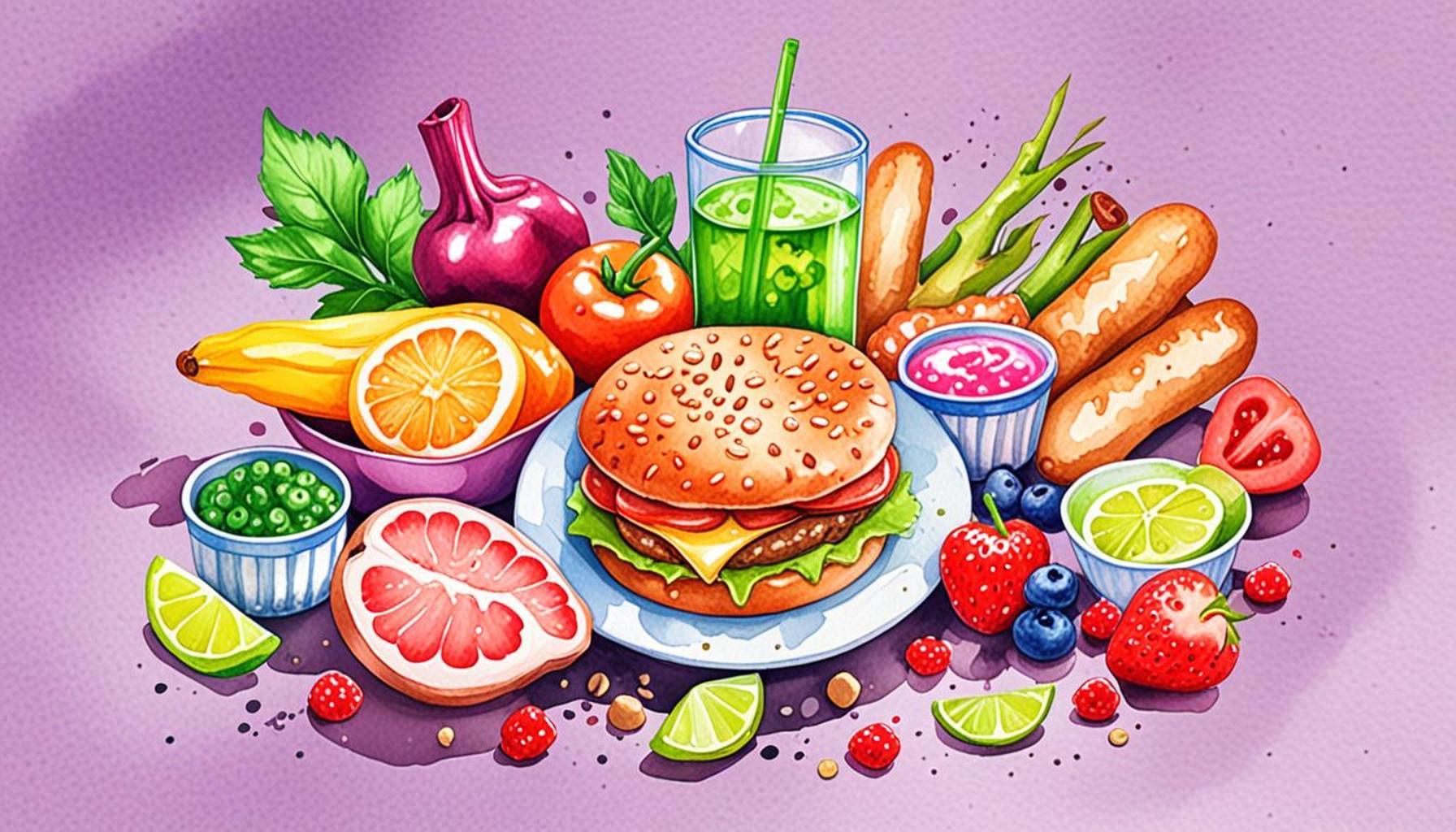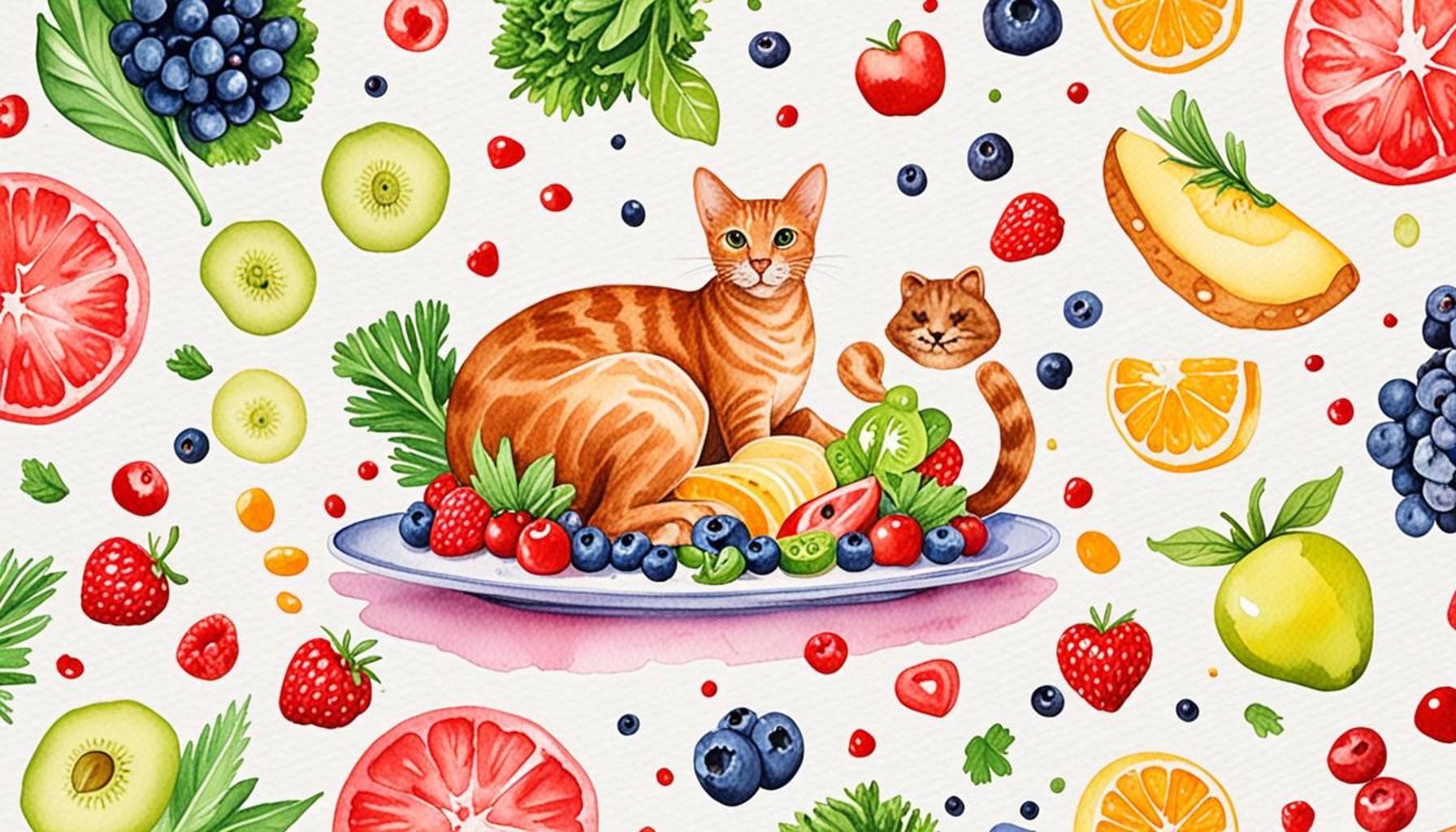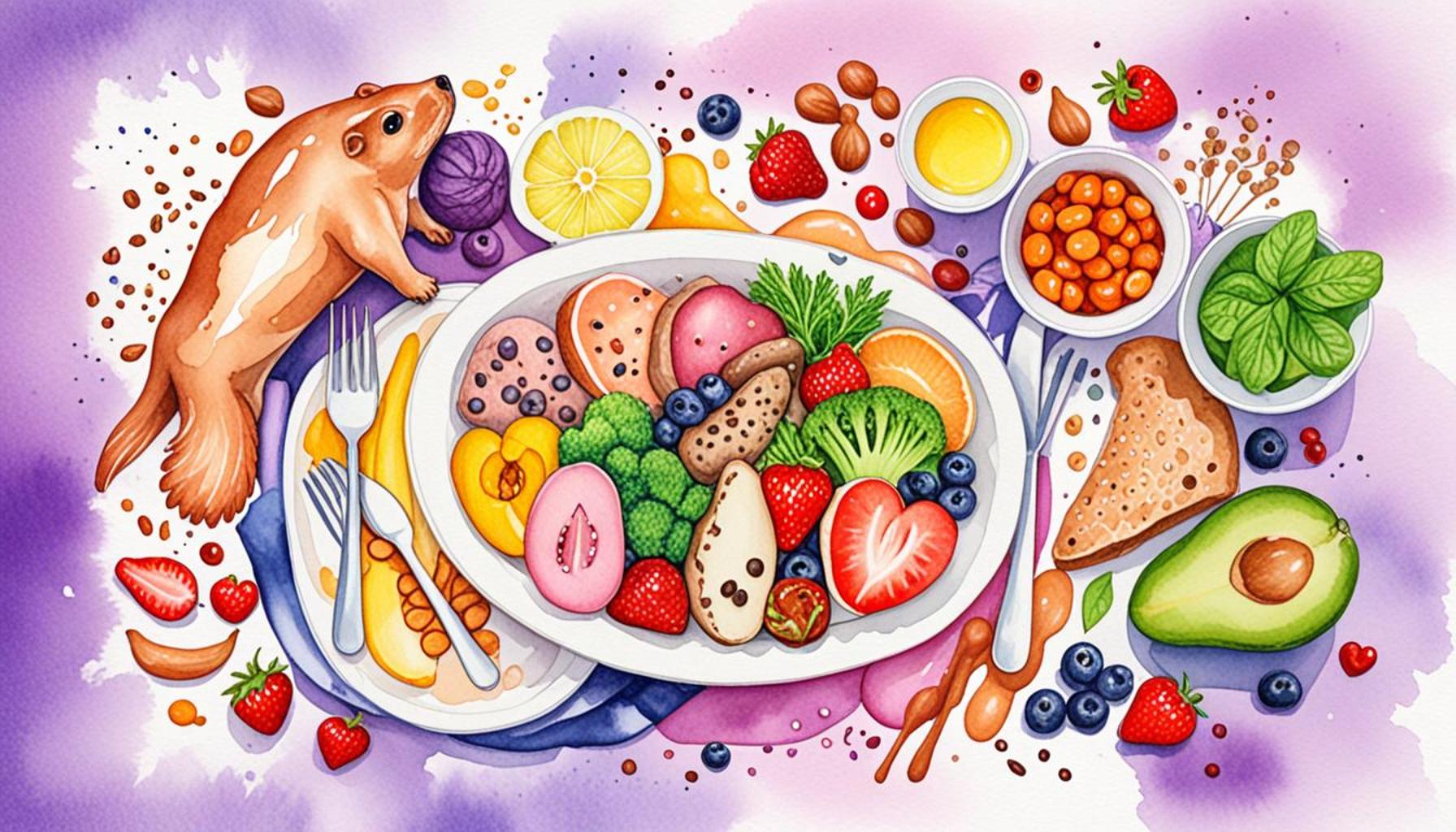Toxic Foods for Pets: What to Avoid in Your Pet’s Diet

Recognizing the Risks of Toxic Foods for Pets
As passionate pet owners, it is imperative that we uphold the health and well-being of our furry companions through proper nutrition. However, amidst our good intentions lies a range of common foods that can inflict serious harm upon our pets. Understanding toxic foods for pets is a necessary precaution for any responsible pet parent.
Across numerous households in the United States, pets often share food scraps and human meals, unknowingly exposing them to harmful substances. For instance, while we might relish a piece of chocolate after dinner, it is crucial to remember that it can be lethal to our canine friends. Chocolate contains theobromine, a compound that dogs and cats metabolize poorly, potentially resulting in symptoms such as vomiting, rapid heartbeat, and, in severe cases, seizures or death.
Another surprising threat comes from common kitchen staples such as onions and garlic. These ingredients, especially when consumed in large quantities, can lead to oxidative damage to red blood cells. The result? A condition known as hemolytic anemia, where the body is unable to effectively transport oxygen. Pet owners should be mindful that even cooked or powdered forms of these foods retain toxicity.
Furthermore, fruits that are otherwise healthy for humans can be detrimental to pets. Grapes and raisins, for example, pose a silent risk; even a small amount can precipitate acute kidney failure in dogs. The exact mechanism of this toxicity remains unclear, but the consequences can be dire, emphasizing the need for vigilance.
Xylitol, a sugar substitute commonly found in sugar-free products like gum and certain baked goods, is another hidden danger. When ingested by dogs, it leads to a rapid release of insulin, which can cause hypoglycemia, liver failure, and, if untreated, can be fatal.

The threat of alcohol should not be overlooked either. Pets can be more susceptible than humans to its intoxicating effects, which can include vomiting, incoordination, and even respiratory failure if they consume more than their small bodies can handle.
The aforementioned foods highlight the pressing need for pet owners to be well-informed. Each pet’s dietary requirements vary, but keeping your home environment and kitchen free of these toxic substances is a proactive step towards safeguarding their health. Awareness can not only save your pet’s life but also lead to a more harmonious life at home.
In subsequent sections, we will delve deeper into each toxic food, explore how they impact our pets, and suggest safe alternatives. By arming yourself with knowledge, you can make decisions that foster both the well-being and joy of your beloved pet!
DIVE DEEPER: Click here for essential insights on pet nutrition
Common Toxic Foods for Pets
Understanding which foods can pose a threat to our pets is crucial in preventing accidental poisoning. Many pet owners may be surprised to learn that certain foods they enjoy daily can be incredibly harmful to their furry friends. Below, we explore some of the most common toxic foods for pets, shedding light on their effects and offering safe alternatives.
Chocolate: A Sweet Threat
As previously mentioned, chocolate is one of the most notorious toxic foods for pets. The dark varieties, in particular, contain higher levels of theobromine, making them even more dangerous. Symptoms of chocolate poisoning include:
- Vomiting
- Diarrhea
- Increased heart rate
- Tremors
- Seizures
Pet owners should always store chocolate products out of reach and be cautious during holidays when chocolate treats may be more accessible.
Onions and Garlic: The Silent Killers
Onions, garlic, and related vegetables (like leeks and chives) can lead to severe health issues in pets. The toxic compound, thiosulfate, disrupts red blood cell function and can result in serious anemia. Clinical signs may take several days to appear, leading to a delay in diagnosis. Symptoms may include:
- Weakness and lethargy
- Pale gums
- Rapid breathing and increased heart rate
Cooked forms of these ingredients are just as dangerous; thus, it is essential to avoid giving your pets any food seasoned with onion or garlic.
Grapes and Raisins: A Hidden Risk
The consumption of grapes and raisins can lead to sudden kidney failure in dogs, a condition that can be fatal. It is unsettling to think that these seemingly harmless snacks are among the toxic foods for pets. Only a small amount can trigger toxicity, with symptoms such as:
- Vomiting
- Diarrhea
- Lethargy
- Decreased appetite
- Abdominal pain
If you suspect that your dog has ingested grapes or raisins, immediate veterinary care is essential.
Xylitol: A Sugar-Free Lethal Ingredient
Xylitol, frequently found in sugar-free gum, candy, and baked goods, poses a significant danger to dogs. Unlike humans, dogs cannot tolerate this sweetener, leading to a rapid decrease in blood sugar levels. This can cause symptoms including:
- Vomiting
- Lethargy
- Loss of coordination
- Seizures
Pet owners should scrutinize labels and be particularly wary of products marketed as “sugar-free,” ensuring they keep these items safely out of reach.
By educating ourselves about these toxic foods for pets and remaining vigilant in our kitchens, we can significantly decrease the risk of food-related health emergencies for our beloved companions. In the next section, we will continue to explore more hazardous foods and outline actionable strategies to promote a safer diet for our pets.
When it comes to keeping our beloved pets healthy, understanding what constitutes toxic foods is paramount. Numerous everyday foods can pose significant risks to your pets, leading to serious health complications or even fatality.
For instance, did you know that chocolate is highly toxic to dogs and can even be deadly? It contains theobromine, which their systems can’t metabolize effectively. Consuming just a small amount can cause symptoms such as vomiting, increased heart rate, and seizures. Similarly, grapes and raisins have been reported to cause sudden kidney failure in dogs; even a modest portion could result in dire health consequences.
Another food to be cautious about is onions and garlic. Both belong to the allium family and can damage red blood cells in pets, leading to a condition called hemolytic anemia. Symptoms often appear gradually, making it easy for pet owners to overlook the initial signs.
Pet owners must also be wary of avocados. While tasty for us, they contain a substance called persin, which can cause vomiting and diarrhea in dogs and cats. Even the pit poses a choking hazard or can lead to intestinal blockages if ingested.
Furthermore, <strong/artificial sweeteners, particularly xylitol, are extremely dangerous for dogs. Even small amounts can trigger a rapid insulin release, resulting in hypoglycemia and potentially life-threatening circumstances.
Awareness and vigilance are essential in preventing accidental poisoning. Keep these toxic foods well out of reach, informed your family and guests about what your pet should avoid, and consult with a veterinarian if you suspect your pet has ingested any harmful substances. The more educated you are about toxic foods for pets, the better you can protect your furry friends.
| Toxic Food Category | Risks Involved |
|---|---|
| Chocolate | Can cause symptoms like vomiting, rapid heartbeat, and seizures. |
| Grapes/Raisins | Linked to sudden kidney failure in dogs. |
| Onions/Garlic | Can damage red blood cells, leading to anemia. |
| Avocados | Can induce vomiting and diarrhea. |
| Xylitol | Causes rapid insulin release, risking hypoglycemia. |
DISCOVER MORE: Click here to learn about the latest trends
More Hazardous Foods to Keep Away from Your Pets
While chocolate, onions, and grapes are some of the most recognized hazards in our pets’ diets, many additional foods can also lead to severe health complications. Understanding these dangers is vital in safeguarding your furry friends from potential harm. Let’s delve into some more toxic foods for pets that should never make it to their bowls.
Avocado: A Surprising Culprit
Avocado is often hailed for its health benefits for humans, but it can be dangerous to pets. The pit, skin, and even the fleshy part of the avocado contain a substance called persin, which can be toxic to dogs and cats. Symptoms of avocado poisoning might manifest as:
- Vomiting
- Diarrhea
- Stomach discomfort
While some dogs tolerate small amounts without severe issues, it’s best to avoid avocado completely to err on the side of caution.
Caffeine: A Forgotten Hazard
Caffeine is widely known as a stimulant for humans, but for pets, it can be a dangerous toxic food. Found in coffee, tea, energy drinks, and certain medications, caffeine can lead to significant health issues, including:
- Increased heart rate
- Restlessness and hyperactivity
- Vomiting
- Muscle tremors
- Potentially fatal seizures
Even small amounts can cause distress, so it’s critical to keep all caffeinated items away from pets.
Macadamia Nuts: A Nutty Danger
While we enjoy the crunch of macadamia nuts, they can inflict a toxic reaction in dogs. The precise mechanism of toxicity remains unclear, but even a few nuts can trigger adverse reactions. Symptoms generally appear within 12 hours of ingestion and may include:
- Weakness
- Vomiting
- Tremors
- Elevated body temperature
Pet owners should ensure these nuts are stored securely to avoid curious munching.
Raw Dough: A Rising Emergency
Many pet owners might not realize the dangers that raw dough poses to their pets. When ingested, yeast dough can rise in the pet’s stomach, potentially leading to bloating and severe gastric distress. The fermentation process produces alcohol, which is harmful and can cause:
- Vomiting
- Lethargy
- Difficulty breathing
- Severe abdominal pain
If you suspect your pet has eaten raw dough, seeking veterinary assistance is urgent.
Certain Stone Fruits: A Risky Snack
Fruits such as cherries, peaches, and plums contain pits that hold cyanogenic glycosides, compounds that can release cyanide when metabolized. While the flesh of these fruits may be safe in small amounts, the pits pose a serious risk. Symptoms of poisoning might include:
- Difficulties in breathing
- Shock
- Seizures
It’s important to remove the pits completely if ever considering offering a piece of these fruits to your pet.
By identifying and understanding these toxic foods for pets, pet owners can take crucial steps to avoid food-induced health crises. Being knowledgeable about what to keep out of your pet’s diet not only protects their health but can enhance their longevity and overall well-being.
DISCOVER MORE: Click here to uncover the latest trends
Final Thoughts on Keeping Your Pets Safe
As a responsible pet owner, understanding the toxic foods for pets that lurk in our kitchens is essential for ensuring their safety and well-being. From seemingly harmless snacks like avocado to hidden dangers such as caffeine and macadamia nuts, the list of foods that can harm our furry friends is extensive and often surprising. The health risks associated with exposure to these toxic foods can range from mild discomfort to severe emergencies, making it imperative to be vigilant.
Beyond the discussed foods, it’s crucial to remain informed about other potential hazards lurking in common household items. Always read labels, avoid giving pets human food unless certain of its safety, and engage in ongoing research to stay updated on dietary guidelines for pets. Consider consulting with a veterinarian if you ever have doubts about what constitutes a safe treat for your animals. Their expertise can help you make informed choices that ensure a long, healthy life for your companions.
By taking proactive measures to educate yourself about what to avoid in your pet’s diet, you not only protect your furry friend from health complications but also contribute to their happiness and longevity. Keep your pets safe, and they will reward you with endless love and companionship.


